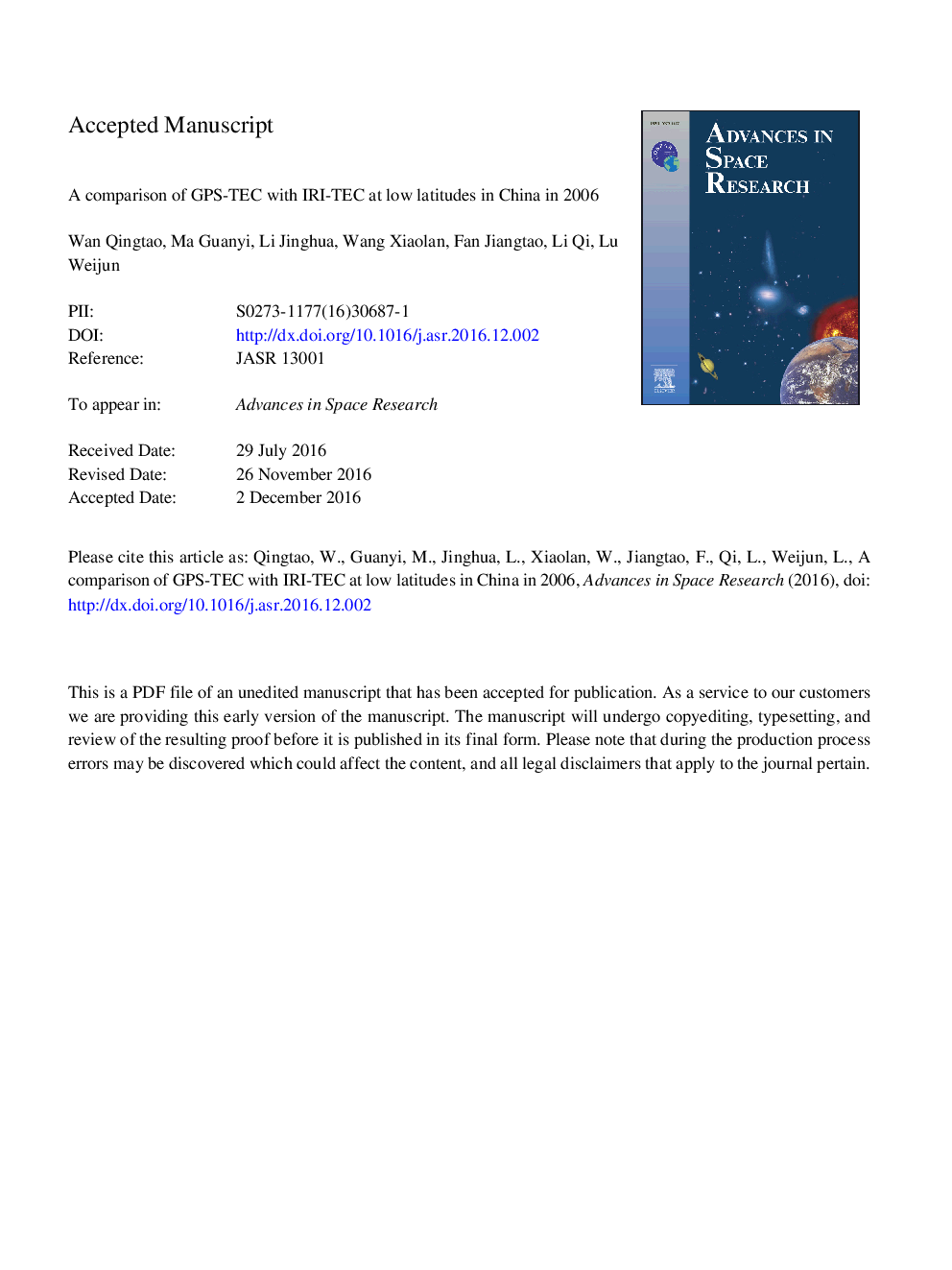| Article ID | Journal | Published Year | Pages | File Type |
|---|---|---|---|---|
| 5486158 | Advances in Space Research | 2017 | 10 Pages |
Abstract
A comparison between GPS derived total electron content (TEC) and IRI-2012 is studied at low latitudes in China in 2006. 4 GPS receivers form a small scale GPS network, and the spatial coverage starts at (26.1°N, 119.3°E) and ends at (22.8°N, 108.3°E), the corresponding magnetic coordinate is from (19.6°N, 191.6°E) to (16.2°N, 180.4°E). The network covers a region at or near the northern crest of the equatorial anomaly with â¼11° and â¼3° in longitude and latitude, respectively. The GPS-TEC is computed with the grid-based method. The ABT-2009 and NeQuick are selected for the bottomside and topside profile model for IRI-2012. There are similar monthly and seasonal variation trends between GPS-TEC and IRI-TEC in 2006, while the peak value of GPS-TEC and IRI-TEC appear at different times. The IRI-TEC is almost larger than GPS-TEC at day time, while the difference is small at night time. The largest difference between GPS-TEC and IRI-TEC can reach 16.5 TECU, and the ratio of the largest difference and GPS-TEC is about 65%. The largest latitudinal gradient of GPS-TEC at 22-24°N was 5 TECU/deg, while that of IRI-TEC was 2.5 TECU/deg. These above results indicate that the IRI-2012 can reproduce the TEC variation trends at low latitudes in China, but the IRI-2012 overestimates the GPS-TEC at day time in this region.
Related Topics
Physical Sciences and Engineering
Earth and Planetary Sciences
Space and Planetary Science
Authors
Qingtao Wan, Guanyi Ma, Jinghua Li, Xiaolan Wang, Jiangtao Fan, Qi Li, Weijun Lu,
